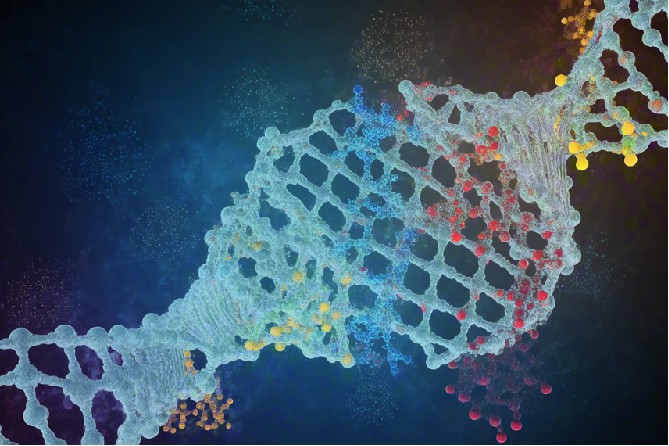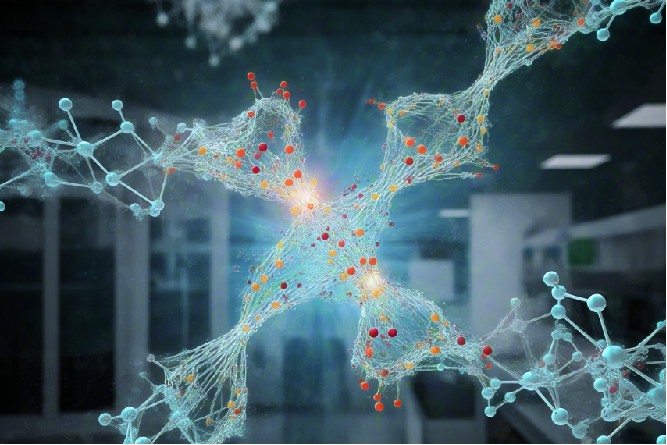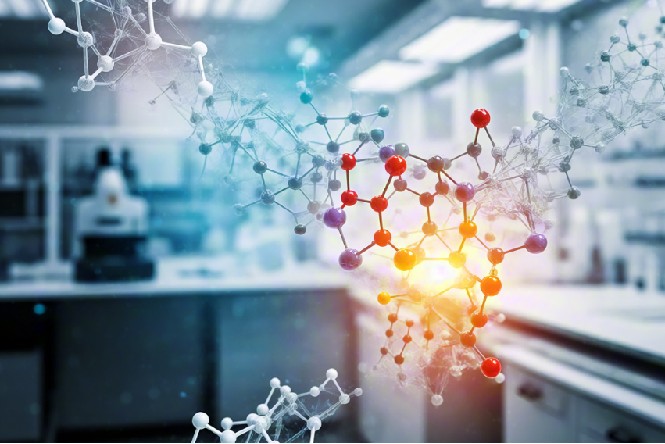Glycoinformatics-assisted N-Glycan Analysis Service
Unleashing the Power of Precision in N-Glycan Analysis
N-Glycan is an oligosaccharide that contains the structure Man3GlcNAc2. It is linked to the polypeptide chain by a glycosidic bond between the terminal N-acetylglucosamine (GlcNAc) and asparagine. The structure of N-glycan usually affects its pharmacokinetics, pharmacodynamics, and immunogenicity. Therefore, characterization and analysis of N-glycan is an essential part of biology.
At CD BioGlyco, we perform
Glycomics Analysis based on efficient and reliable Glycoinformatics technology. Here, we provide our clients with N-glycan analysis services that encompass the analysis of N-glycans ranging from intact proteins to glycopeptide chains, released glycans, to individual monosaccharides that comprise the N-glycan.

Chromatography-based N-glycan analysis
Hydrophilic interaction (HILIC) and ultra-high-performance liquid chromatography (UHPLC) are widely accepted techniques for the analysis of N-glycan, and they offer superior separation and speed of separation for N-glycan analysis of large numbers of samples. At CD BioGlyco, we combine two chromatography methods (HILIC, UHPLC) with fluorescence detection, to efficiently and accurately determine the N-glycan species in a sample.
On the other hand, we also provide the HILIC-mass spectrometry (HILIC-MS) method to analyze the structure of N-glycans. Depending on the degree of separation, we recognize the bonded isomers by the following features: the N-glycan with α(2,3)-sialylation has a shorter HILIC retention time than the isomerized N-glycan with α(2,6)-sialylation bonding.
Matrix-assisted laser desorption ionization-time of flight MS (MALDI-TOF MS)-based N-glycan analysis
MALDI-TOF MS provides high sensitivity and high throughput detection for structural characterization of glycans. MALDI analyzes samples by forming singly charged ions instead of electrospray ionization when we analyze N-glycan mixtures. After an enzymatic reaction using N-glycosidase A or F to release N-glycan from the sample, the sample is methylated and then analyzed.
LC-ion mobility-MS (LC-IM-MS)-based N-glycan analysis
We use minimized glucose ladders as calibrators for qualitative and quantitative analysis of N-glycan using the single-shot LC-IM-MS. In this procedure, we mix the minimized glucose ladder directly into the sample for glucose units (GU) calibration and use released glycans as a reference.
Microarray assay-based N-glycan analysis
Microarray assay is a high-throughput way to analyze N-glycan, allowing thousands of different samples to be analyzed in parallel on a small microarray. We immobilize N-glycan at predetermined locations on the microarray substrate. Fluorescent staining or radiolabeling is used to label the target molecules so that they can be accurately analyzed for binding to N-glycan. This method allows for easy and rapid identification of N-glycan molecules that exhibit discernible interactions, revealing the structural and functional properties of N-glycan.
Publication Data
Technology: HILIC
Journal: Analytical and Bioanalytical Chemistry
IF: 4.3
Published: 2022
Results: In this article, the authors present a dextran ladder containing a smaller number of oligos as an internal calibration standard for qualitative and quantitative analysis of N-glycan using HILIC. The authors shortened the time of absolute measurements by keeping the number of dextran oligosaccharides as low as possible. Throughout the test, the calibrators were doped directly into the samples without generating overlapping signals. In addition, the authors illustrate how minimizing the dextran ladder can be used to estimate collision cross-section values in traveling wave IM-MS experiments.
 Fig.1 Chromatogram of glucose oligomers in HILIC mode. (Manz, et al., 2022)
Fig.1 Chromatogram of glucose oligomers in HILIC mode. (Manz, et al., 2022)
Applications
- Glycoinformatics-assisted methods can be used in the analysis of glycopeptide chains, released N-glycan, and N-glycan composed of individual sugars.
- Glycoinformatics-assisted N-glycan analysis can probe the relationship between N-glycan structure and function, which can then be used in the development of biotherapeutic drugs.
- Glycoinformatics-assisted N-glycan analysis can be used to research interactions between N-glycans and between proteins and N-glycans.
Advantages
- We have a professional glycoinformatics platform to provide our clients with various types of services such as glycosylation prediction and validation, as well as processing and visualization of N-glycan analysis data.
- We provide N-glycan analysis one-stop services, such as sample preparation, on-board analysis, data analysis, and project reports for clients all over the world.
- Our N-glycan analysis experiments have high detection sensitivity and good reproducibility with relatively short project cycle time.
Frequently Asked Questions
- What is N-glycan?
- N-glycan is a class of oligosaccharides attached to the amide nitrogen of the side chain of asparagine residues in protein-peptide chains. Such oligosaccharides typically have a core pentasaccharide and peripheral glycan chains of similar structure. N-glycan is involved in a wide range of processes in all organisms from archaea to eukaryotes, and is the most common covalent protein modification in eukaryotic cells, with chemical complexity and diverse functions. N-glycan is involved in a wide range of processes in all organisms from archaea to eukaryotes.
- What are the types of N-glycan?
- All N-glycans are based on a common core: The pentose sugar Man3GlcNAc2 and further processing by the Golgi apparatus leads to the formation of three major classes of N-glycan.
-
High mannose: High mannose glycans contain unsubstituted terminal mannose, and these glycans typically contain 5 to 9 mannose residues linked to a chitosan (GlcNAc2) core.
-
Heteroglycans: Heteroglycans are characterized by the presence of unsubstituted terminal mannose residues as well as N- GlcNAc bonds that replace the mannose residues.
-
Complex class: The complex class N-glycan adds GlcNAc residues at the α-3 and α-6 mannose sites, which are partially free of mannose residues except for the core structure. In addition, the complex class N-glycan constitutes the majority of cell surface and secreted N-glycan.
CD BioGlycohas many years of experience in the field of glycomics and has received high praise from clients around the world. We combine glycoinformatics-related technologies to customize N-glycan analysis services according to your specific needs. Please feel free to contact us if you have any questions about N-glycan analysis.
Reference
- Manz, C.; et al. Dextran as internal calibrant for N-glycan analysis by liquid chromatography coupled to ion mobility-mass spectrometry. Analytical and Bioanalytical Chemistry. 2022, 414: 5023-5031.
For research use only. Not intended for any diagnostic use.
Quick Links
Related Services



 Fig.1 Chromatogram of glucose oligomers in HILIC mode. (Manz, et al., 2022)
Fig.1 Chromatogram of glucose oligomers in HILIC mode. (Manz, et al., 2022)


